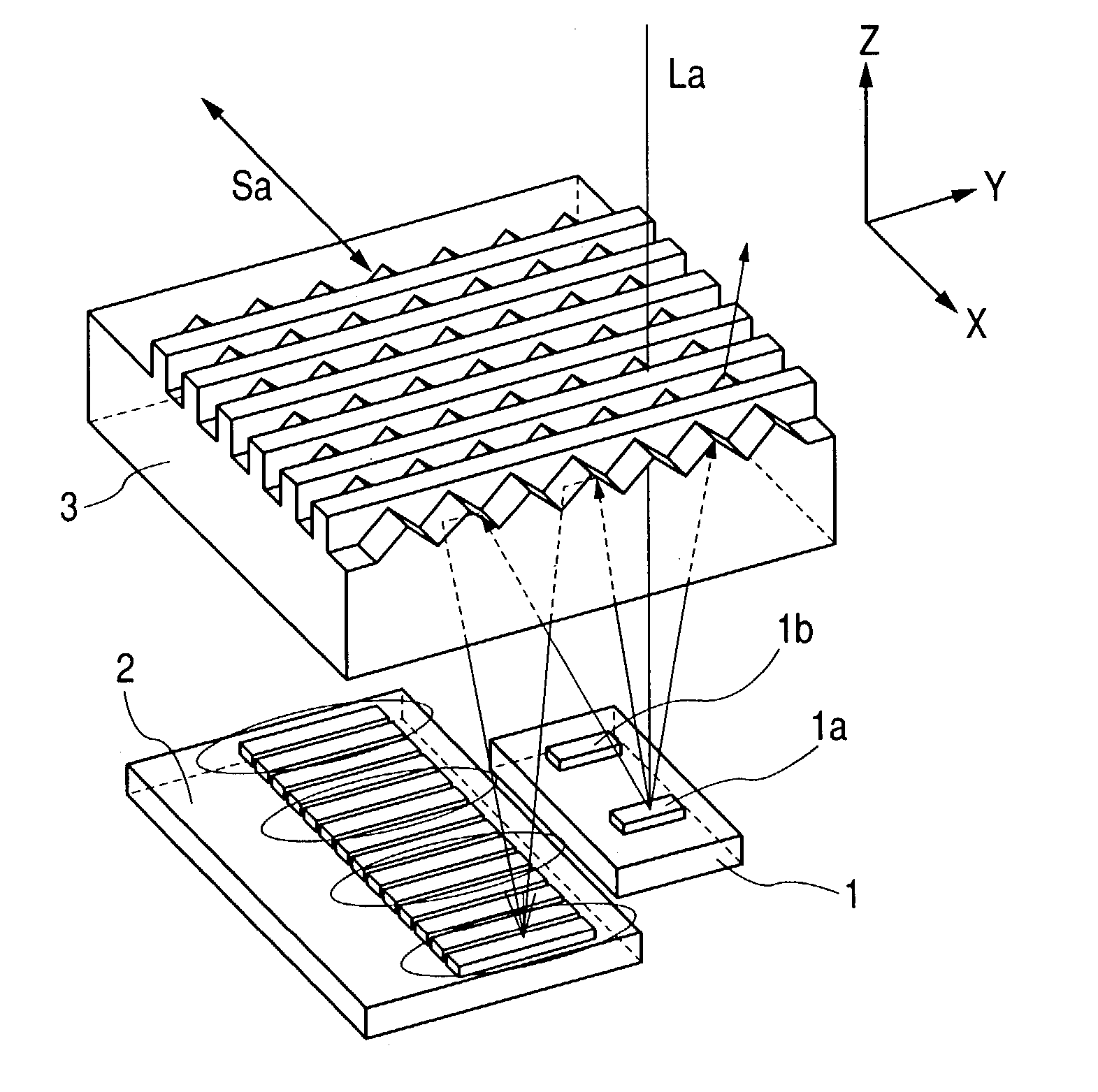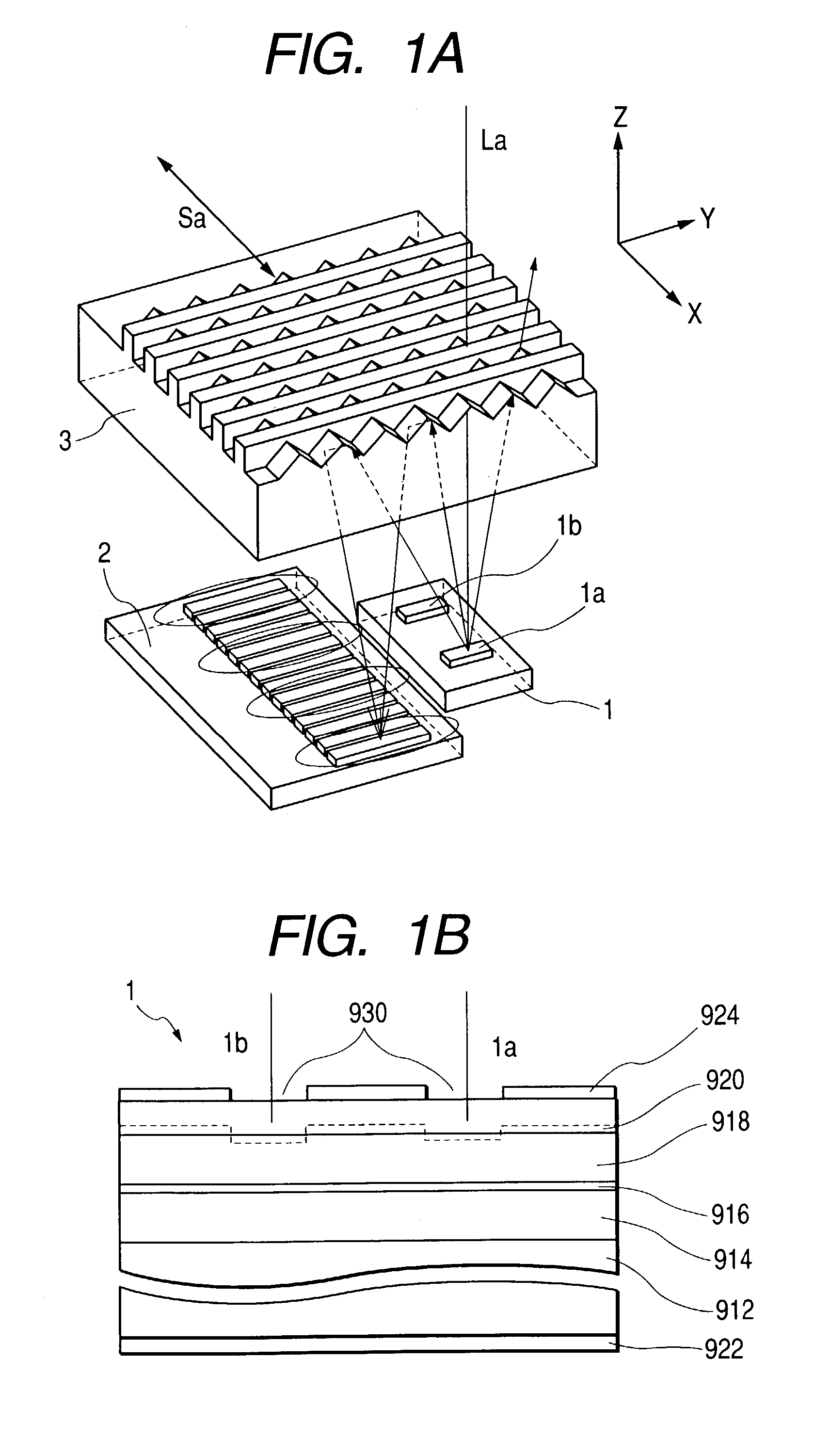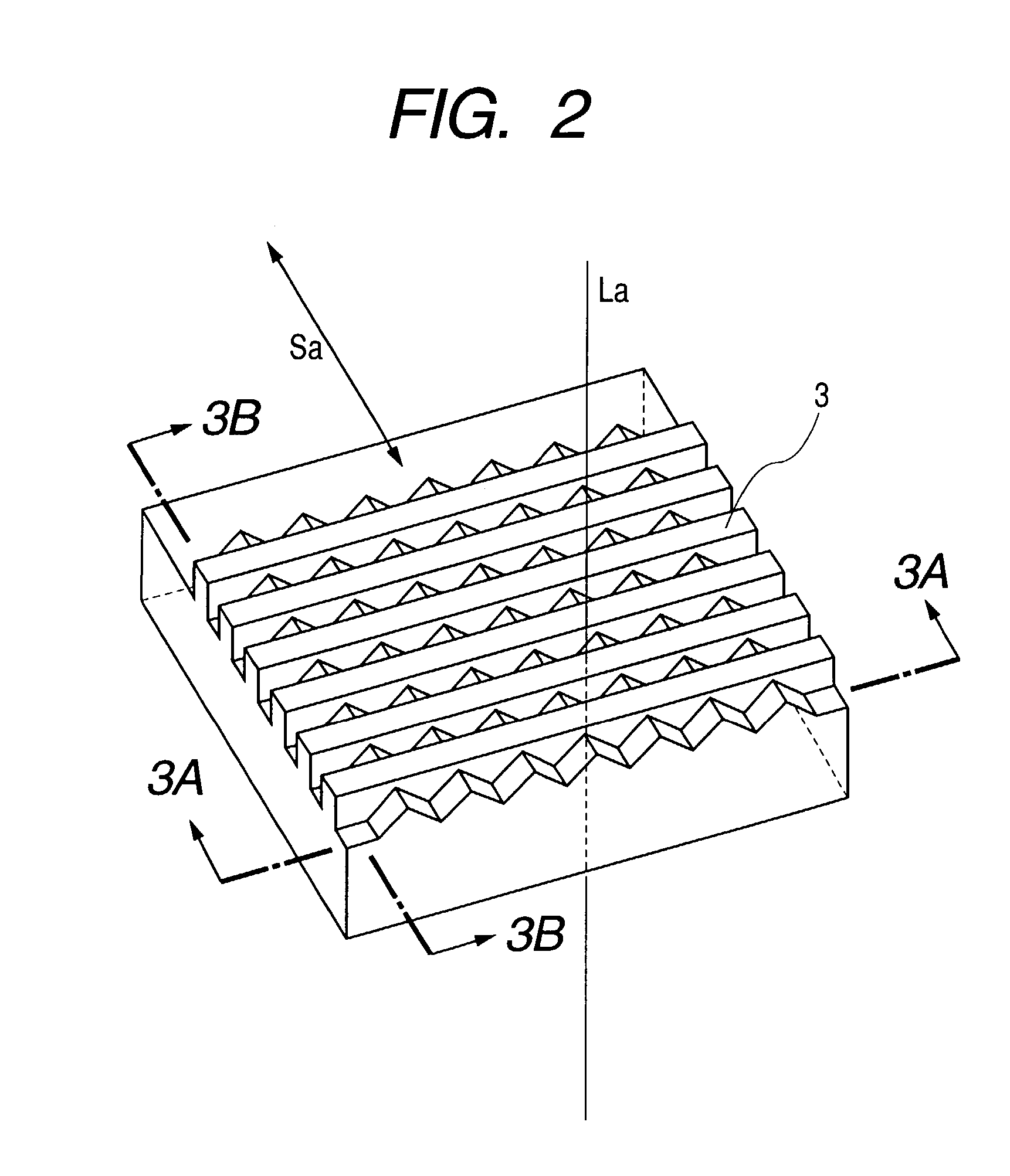Sensor using roof mirror/roof prism array scale, and apparatus equipped with the sensor
a technology of prism array scale and sensor, which is applied in the direction of lenses, instruments, optical elements, etc., can solve the problems of increasing power consumption, increasing power consumption in a similar manner, and complicated apparatus as a whole, and achieves low power consumption and favorable gap characteristics.
- Summary
- Abstract
- Description
- Claims
- Application Information
AI Technical Summary
Benefits of technology
Problems solved by technology
Method used
Image
Examples
first embodiment
[0097]FIG. 1A is a perspective view of the main portion of an optical system of a first embodiment that uses an optical-reflection-type linear scale of the present invention. First, there will be briefly described (1) a light source means and a light-receiving means and (2) a reflection scale in this order.
(1) Light Source Means, Light-receiving Means
[0098]In this drawing, reference numeral 1 denotes a multi-point light emission LED of a current constricting type that functions as a light source means and is a light-emitting diode having a current constricting structure with which current is concentrated in a limited light-emitting region, reactive current is reduced, and there is taken out light. The light source 1 has a construction where a plurality of light-emitting regions are provided on a semiconductor substrate.
[0099]In this embodiment, there are provided two light-emitting regions that are a light-emitting region 1a and a light-emitting region 1b. The light source 1 radiate...
second embodiment
[0202]A second embodiment differs from the first embodiment described above only in a size relation in a manner described below.
[0203]In this second embodiment, only P1 and P2 are changed and other sizes are completely the same as those in the first embodiment.
[0204]It is assumed that P1 that is the pitch of the MRA scale is approximately equal to 42 μm, while P2 that is the arrangement pitch of the array-shaped light source / the pitch between the segments (S1, S2, and S3) of the photodiode array is approximately equal to 84 μm.
[0205]Here, a preferable gap setting position will be calculated by concretely assuming important numerical values in the second embodiment, as is the case of the first embodiment described above.
[0206]From the disclosed relational expression, the gap V(=U), with which an optimum interference fringe contrast is obtained through air conversion, becomes as follows when n that is a natural number is set at “1”.
[0207]U=2nP12 / λ=2×(42×42÷0.65)≈5,428µm
[0208]FIG...
third embodiment
[0212]A third embodiment differs from the first embodiment only in a size relation in a manner described below, as is the case of the second embodiment.
[0213]In this second embodiment, only P1 and P2 are changed and other sizes are completely the same as those in the first embodiment.
[0214]It is assumed that P1 that is the pitch of the MRA scale is approximately equal to 21 μm, while P2 that is the arrangement pitch of the array-shaped light source / the pitch between segments (S1, S2, and S3) of the photodiode array is approximately equal to 42 μm.
[0215]Here, a preferable gap setting position will be calculated by concretely assuming important numerical values in the third embodiment, as is the case of the first embodiment described above.
[0216]From the disclosed relational expression, the gap V(=U), with which an optimum interference fringe contrast is obtained through air conversion, becomes as follows when n that is a natural number is set at “1”.
[0217]U=2nP12 / λ=2×(21×21÷0.65)≈...
PUM
 Login to View More
Login to View More Abstract
Description
Claims
Application Information
 Login to View More
Login to View More - R&D
- Intellectual Property
- Life Sciences
- Materials
- Tech Scout
- Unparalleled Data Quality
- Higher Quality Content
- 60% Fewer Hallucinations
Browse by: Latest US Patents, China's latest patents, Technical Efficacy Thesaurus, Application Domain, Technology Topic, Popular Technical Reports.
© 2025 PatSnap. All rights reserved.Legal|Privacy policy|Modern Slavery Act Transparency Statement|Sitemap|About US| Contact US: help@patsnap.com



